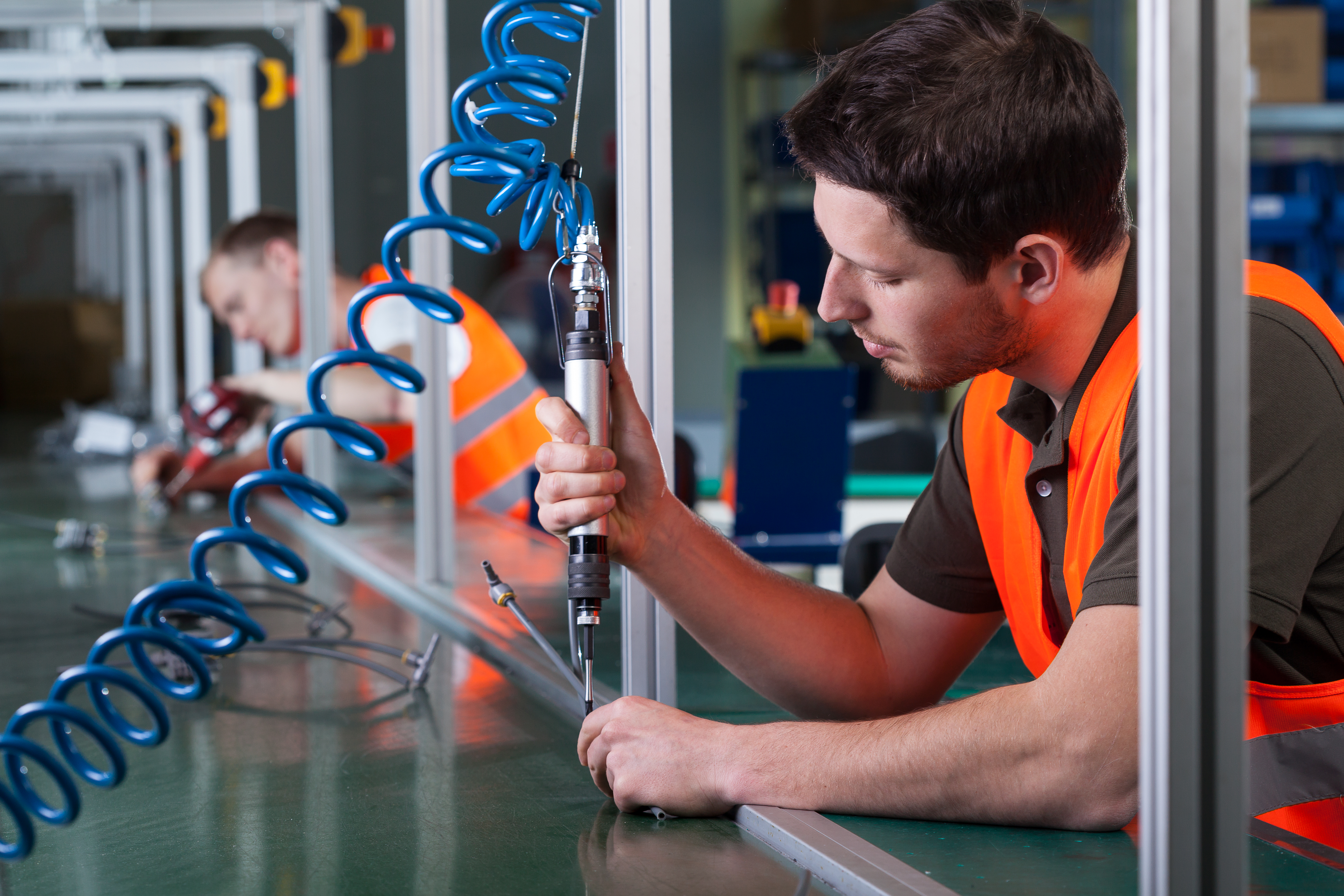
by Lean Material Handling | Nov 14, 2019 | Factory, Intra-logistics, Lean Manufacturing, Lean Production, Material Handling
Industrial automation is the use of automated control systems and devices such as robotics and computer software to control industrial processes and machinery, resulting in automatic functioning of industrial processes without the need for significant human intervention. Industrial automation is implemented to make industrial production processes simpler and efficient. Furthermore, it helps to save on labor costs, eliminate the possibility of human error, save time, create a safer working environment, and achieve higher efficiency.
Industrial automation has seamlessly integrated into almost every industry, with automated systems doing everything from manufacturing to packaging, and controlling HVAC systems.
Industrial automation involves the use of a wide range of tools that incorporate different devices and systems that impact on different aspects of the assembling or production process. Some of the industrial automation tools include; PLC’s, PC’s, machine drivers, sensors & actuators, human-machine interface systems, robotics, and communication modules.
Types of industrial automation systems
Fixed automation system – This system is designed to perform fixed and repetitive tasks, and there are rarely any changes made to the operations. This system is commonly employed in mass production systems.
Programmable automation system – In this system, assembling or processing operations can be modified using electronic controls. Reconfiguring this system takes a considerable amount of time and a longer setup, and it’s usually used in batch process production.
Flexible automation system- A flexible system is controlled by computers and offers great flexibility for making changes to the assembling or processing operations. These changes can be implemented quickly through commands. This system is best suited for production processes where the product varies frequently.
Advantages of Industrial Automation
Improved efficiency
Automated systems work faster and harder than humans, and can be deployed for 24 hours in a day 7 days in a week and 365 days a year.
Automation improves quality
Industrial automation cuts out the factor of human error to guarantee products of a higher and consistent quality.
High flexibility
Introducing new production capabilities in a production line results in many training hours for operators. However, automated systems can be programmed to do any task. New production capabilities can be instantly integrated into an assembly line. This allows manufacturers to save money and time on training.
Improved safety
Automated systems remove employees from dangerous work environments such as extreme temperatures, exposure to hazardous chemicals, poor air quality, heavy objects, and other dangerous working conditions.
Higher information accuracy
Manufacturers require production-related data to make informed decisions. Manual collection of data can be costly and prone to human errors. Industrial automation allows for automated and accurate data collection using sensors and devices.
Reduces costs
Industrial automation significantly reduces operating costs. Unlike human operators, an automated system does not require things like paid leave, holidays’ healthcare cover or any employee benefits. Although the initial costs may be high, subsequent costs are lower compared to employed human workers. Moreover, industrial automation achieves higher efficiency with fewer workers which means a higher return on investment.
Industrial automation has truly revolutionized the manufacturing sector in many ways. Manufacturing is certainly a tedious process without automation. Therefore, manufacturers need to adopt industrial automation to streamline production and boost profit margins.

by Lean Material Handling | Apr 9, 2018 | Lean Production
In business, sustainability matters just like profitability. The two go together since if a process profits the company and is sustainable, no one can do away with it. One way of achieving these two factors is through managing waste. Through the lean manufacturing methods of eliminating waste, a business can reach its goals without having to endure high cost finally. This agenda shouldn’t be a one-time deal. As a business, you need to continually evaluate your processes for waste and rid off it and improve areas that need improvement. Continual evaluation of your business and the waste in your process is what lean process improvement is.
The process is directed at continually improving the business processes and can be adopted in any industry. Now, lean process improvement is guided by the 5S methodology which stands for;
Sort- seiri
By sorting things in order of their use helps reduce time wasted and take care of distractions in business processes. Any items that are least used should be relocated somewhere else to save on space and any unnecessary items or operations eliminated. Through sorting, you will reduce the clutter that may be undermining your processes.
Set in order- seiton
After sorting, the next step in lean process improvement is optimally organizing the items. Those that are used more often needs to be within reach for a smooth workflow. Keeping commonly used tools nearby, and in fixed locations will be a significant time saver.
Shine – seiso
The third-S is more of maintenance. You know very well that proper support helps avoid repair costs and improve the quality of a process. In line with that, regular inspections, regular software updates, and always keeping the workplace clean not only ensure safety but also makes it easy to pinpoint problems before they escalate.
Standardize – seiketsu
Using the first three steps, certain things will change for the sake of lean process improvement. These changes need to be permanent and therefore standardizing processes makes it difficult to fall back contributing to growth. Whatever procedures you put in place and the schedules to be followed, they should be aimed at continuous improvement.
Sustain – shitsuke
Lean process improvement demands constant growth. Sustaining the adopted processes during the 5s methodology creates room for accountability. Training sessions, regular audits, implementing enhancements when necessary and other performance evaluation processes help promote sustainability.
Furthermore, lean process improvement shouldn’t be treated as an event. Instead, it is a mindset that organizations should use to solve systematic gaps in their processes. By viewing it as a mindset, delivering services to customers becomes easy as 123, and they do not struggle to maintain growth and improvement.
Lean process improvement, therefore, maximizes value and provides room for fast delivery. Through a scientific approach, businesses can identify opportunities, plan the processes that will achieve growth, execute implementation changes and finally review how well the changes are doing in the overall business process.
So you see, lean process improvement is essential in organizations for growth. However, if you want it to be effective, it has to be applied in all departments. Optimizing one sector of your business will mean that another will try to keep up or will be inconsistent with the new improved business structure, therefore, hurting the company. Thus, optimize all areas of your business using the 5s methodology.
Additionally, some tools have been developed to help organizations and businesses improve their processes. One of them is Nintex Promapp that manages the business process through lean tagging and tracking waste and cost.
Lean process improvement is that simple. Just follow the 5S methodology and watch your business processes improve and you will be able to keep eliminating waste.





